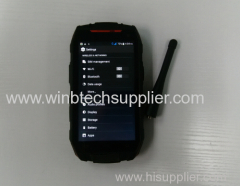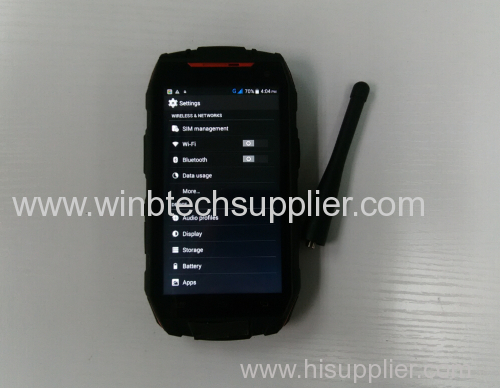dpmr walkie talkie 2g ram 16g 32g Digital push to talk PTT walkie tapke DDMR DMR two way radio
dpmr walkie talkie 5inch phone quad core NFC RFID rugged phone dpmr walkie talkie
specs
Model No.:ws17s17
Production Capacity:10000pcs/month
Delivery Date:2-3days
Operation System:Others
Display Color:16000k color
Camera:Others
Brand Name:OEMwonbtech ws17
3G:WCDMA 850/900/1900/2100MHz
WIFI:Wi-Fi 802.11 b/g/n, DLNA, W...
dpmr:digital walkie talkie
Means of Transport:Ocean,Air
Packing:standard
Technology:WCDMA
Ringtone:64 channels
Memory Slot:MiniSD Card
Design:Bar
2G Network:GSM 850 / 900 / 1800 / 1900...
gps:GPS+AGPS
nfc:nfc rfid
digital push to talk:digital push to talk
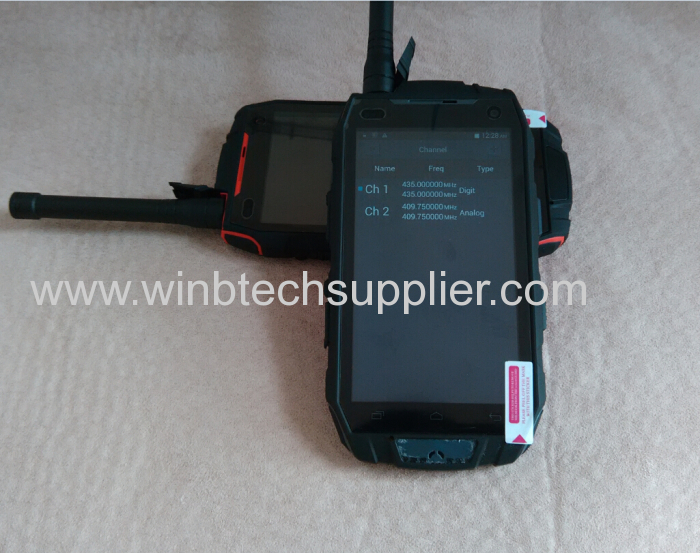
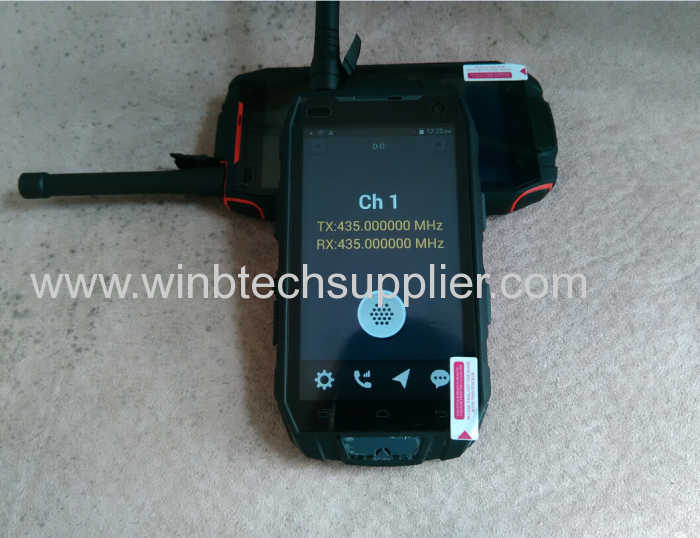
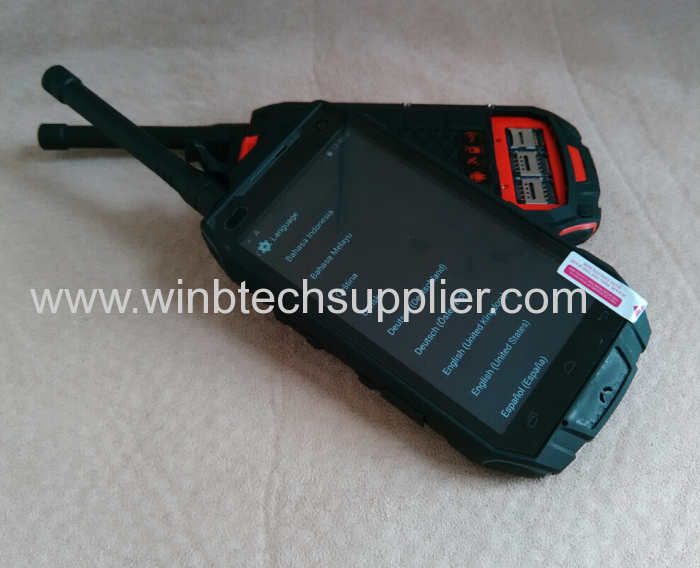
DPMR push to talk 400-480mhz UHF walkie talkie DMR PPT for outdoor for military for mining lone worker use smart phone
DPMR push to talk 400-480mhz UHF walkie talkie DMR PPT for outdoor for military for mining lone worker use smart phone
DPMR push to talk 400-480mhz UHF walkie talkie for outdoor for military for mining lone worker use smart phone
DPMR push to talk 400-480mhz UHF walkie talkie DMR PPT for outdoor for military for mining lone worker use smart phone
DPMR push to talk 400-480mhz UHF NFC rugged phone 2G RAM New factory 5INCH Phone!! 5inch Original NFC Mobile Phone IP68 Waterproof DPMR Walkie talK push to talk
DPMR Digital Two Way Radio
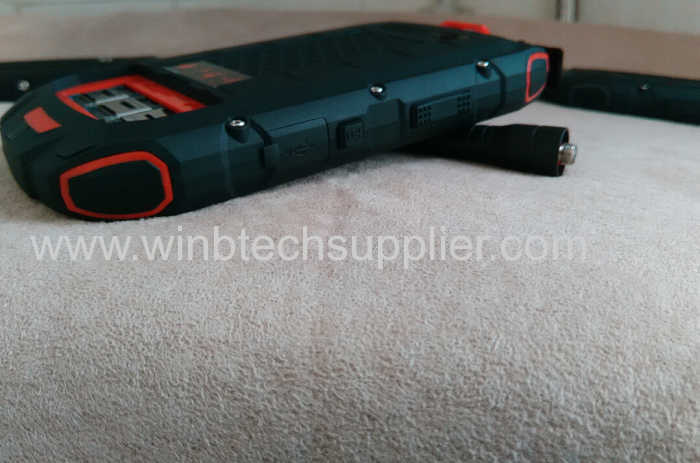
DPMR Digital Two Way Radio DP-100
1.Dual Modes of Analog & Digital
2.Superior Voice and Audio
3. DPMR
DPMR Digital Two Way Radio DP-100
Detailed Specification:
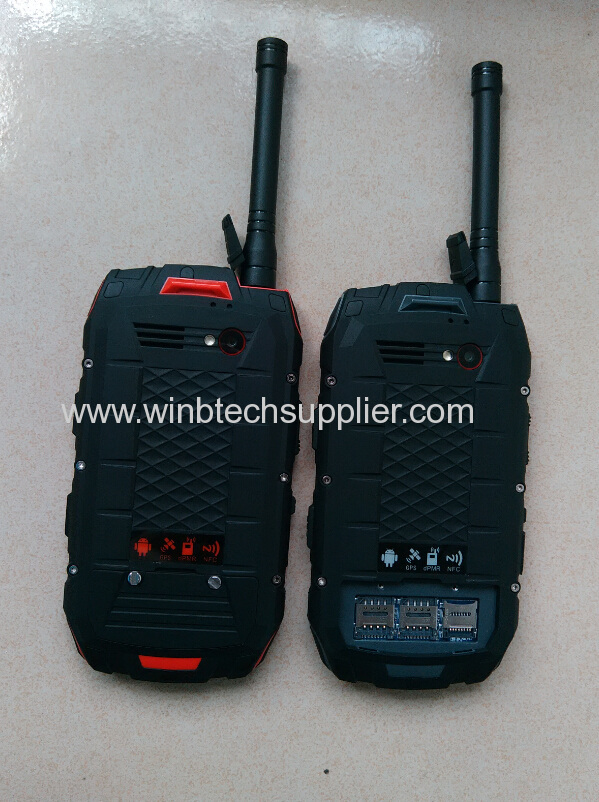
Until now, TDMA was more spectrum efficient at wider channel spacing's like 25kHz, as for example, two or three users could access the same bandwidth as one FDMA channel user. However, in the case of the newly developed narrowband 6.25kHz FDMA technology like dPMR, both this and 2-slot 12.5kHz TDMA technology achieve the same result as far as spectrum efficiency is concerned.
Voice codec
dPMR in common with other fully digital radio systems does not transmit analogue voice signals. The voice signals transmitted have to be converted to digital and this process is accomplished by the vocoder. In order to ensure that all types and modes of dPMR will interoperate it is clearly essential that use is made of the same vocoder. For this reason, the dPMR association has evaluated suitable vocoder technologies and has selected the standard vocoder to be used by all dPMR radios. Users can now be assured that radio products that carry the dPMR approved trademark will interoperate for all types of voice call. It is of course possible using the dPMR protocol to implement radio equipment with more than one vocoder type for specific applications and provided such equipment also offers the standard vocoder it may also be marked with the dPMR approved trademark.
Spectrum Efficiency
Both TDMA and FDMA technologies achieve the same 6.25kHz narrowband capability via different methods. The difference is that the FDMA system is a 'true' 6.25kHz channel and the TDMA system provides 6.25kHz channel 'equivalence' via the time slots in 12.5kHz band-width. From the perspective that 12.5kHz is considered the current narrowband standard channel spacing, then both systems achieve so called "double capacity". The difference is that the FDMA system is ALWAYS double capacity whether it is used with or without infrastructure. For TDMA, double capacity is ONLY achieved when a repeater is synchronizing the time slots, and that two users are in the same geographical area, accessing the same repeater at the same time.
FDMA Digital Mode


dPMR - Digital PMR
- notes and summary or tutorial of the basics of dPMR - digital PMR - the digital personal, private, professional, mobile radio system.
dPMR, the digital personal, private or professional mobile radio system is a new digital PMR system that has been developed to meet the needs of many radio users.
The dPMR or digital PMR system has been developed to offer improved performance over systems such as the licence free analogue PMR446, as well as providing more advanced capabilities for more demanding professional mobile radio users.
dPMR MOU
In order to support the development of dPMR, digital PMR and to provide a forum for all interested dPMR parties, the dPMR MoU group was established in 2007. The dPMR MoU group includes radio manufacturers, chip manufacturers, protocol and software developers and systems developers. By working together to develop, define and promote dPMR, the technology will gain market share and become more widely deployed.
One of the main requirements for any technology such as dPMR where equipment will be available from many suppliers, is that it should be completely interoperable. The dPMR MoU group has been particularly active in this area ensuring an independent validation of interworking between dPMR products from different manufacturers and identifying equipment tested under dPMR MoU auspices by the use of a specific dPMR logo.
dPMR basics
The dPMR, digital PMR system is a standard that has been defined by ETSI - European Telecommunications Standards Institute.
The dPMR standard defines an FDMA, frequency division multiple access scheme using narrowband 6.25 kHz channels and 4FSK modulation to provide efficient spectrum usage and low costs.
The dPMR system is aimed at a number of personal, private, and professional mobile radio user groups:
Consumer (and short-range industrial).
Professional/Business-Critical applications.
Public Safety/Mission-Critical applications.
Tier 1: This dPMR tier is aimed at the low cost license exempt market that could be considered as the digital PMR446 arena, and as a result it is often referred to as dPMR446. The Tier 1 dPMR is the simplest form of the technology and allows peer-to-peer operation only without the use of repeaters or base stations. It is intended for operation as a licence free form of communications and therefore it is subject to the same limitations as the analogue PMR446 equivalent in the countries where it is allowed.
Power levels are limited to 0.5 watts, and the use of handheld equipment only is allowed. The frequencies allowed are between 446.100 and 446.200 MHz on a 6.25 kHz channel spacing, and even within this reduced band, dPMR is able to provide double the number of channels used with analogue PMR446.
dPMR446 equipment is able to support voice and data, separate and combined, and it is also capable of supporting a simplified addressing scheme that provides the functionality that of CTCSS used with analogue PMR446. Also the fact that dPMR446 supports simultaneous voice and data means that data can be embedded into a voice call. This means that dPMR446 can offer all the usual voice services plus text messaging (SMS), status information texts, embedded data such as GPS position etc.Tier 2: The dPMR tier is aimed at the professional market and offers three modes of operations:
Mode 1: This is a peer to peer mode for the professional dPMR variant. Essentially it is an advanced form of the dPMR446, and if the dPMR446 channels were used, then dPMR and Mode 1 dPMR radios could operate together. However dPMR Mode 1 also has the capability of being used on other frequencies as defined in any licence. It also does not have the dPMR446 power limits placed on it.
Mode 1 dPMR is also able to provide voice and data as well as supporting combined voice+data making it possible to embed data into a voice call or automatically append it at the end of a call. Accordingly it can provide normal voice services as well as text messaging (SMS), status information texts and embedded data. The fact that dPMR Mode 1 is not subject to licence free limitations means that it can also offer additional functions including priority and emergency calls and break-in.Mode 2: dPMR mode 2 adds a considerable level of functionality over Mode 1. Repeaters and infrastructure are added, allowing networks interfaces which can either be IP based or analogue. As a result of the use of repeaters coverage areas are considerably greater than is possible with Mode 1. It is also possible to sue multiple repeaters which can be managed by dynamic channel selection. Alternatively they can be co-channel wide area repeaters using specific functions from the dPMR Mode 2 protocol.
dPMR Mode 2 is able to provide all the basic functions contained within Mode 1. However it is able to provide additional flexibility by being able to interface beyond the wireless part of the network. IP connectivity permits user groups to include PC based terminals from other offices, areas or even countries. The same interface are able to provide remote control of a base station or repeater from a fixed connection.Mode 3: This dPMR, digital PMR mode offers trunked, managed access operation. It provides the capability to enable multichannel, multisite radio networks that are fully managed by specific beacon channels at each radio site.
The management of the radio networks includes authentication of radios that wish to connect toth e network. Additionally calls that are set up can be routed in many ways - to other radios, landline numbers, or even IP addresses.
The allocation of communication channels is made dynamically, and this allows the system to optimise the traffic. It can even dynamically modify the permitted call times. Additionally, radios that fail authentication can be blocked temporarily or permanently - a feature available in systems such as GSM and other cellular networks where rouge user equipment's can be blocked if they are stolen or not suitable for the network.
The system also allows radios with authority to pre-empt channels - for example to make emergency calls, etc. Also where call requests exceed capacity, these calls can be queued by the system until resources become available.ETSI TECHNICAL
SPECIFICATION NUMBERDETAILS WITHIN THE DIGITAL PMR SPECIFICATION
The dPMR, digital PMR system is able to operate on many frequencies dependent upon the national frequency planning and licensing regulations. However the digital PMR system has also been developed to operate within the unlicensed areas available between 446.1 and 446.2 MHz. This frequency allocation has been agreed by CEPT/ECC (under agreement ECC/DEC/(05)12). It is in the process of being adopted throughout Europe for approved equipment and on a license exempt basis. This is the same regulatory situation that is used for the analogue PMR446 system, but with PMR446 occupying the 100kHz immediately below the dPMR allocation.
The digital PMR system has been developed in tiers according to the intended applications and system complexity required:
ETSI DpMR specifications
The dPMR, digital PMR system is defined under a number of different ETSI standards as defined in the table below:
| TS 102 490 | Tier 1 low-cost, licence-exempt 'digital PMR446.' |
| TS 102 658 | Tier 2 dPMR for the licensed professional market. |
| TS 102 587 | Tier 1 test specification suites. |
| TS 102 726 | Tier 2 test specification suites. |
